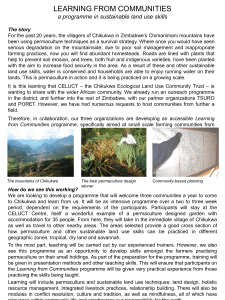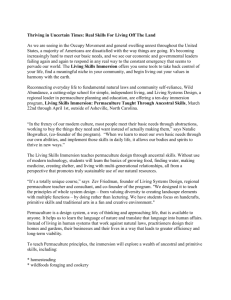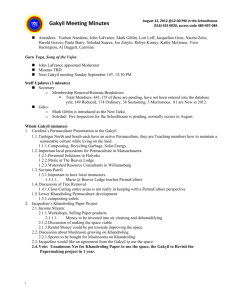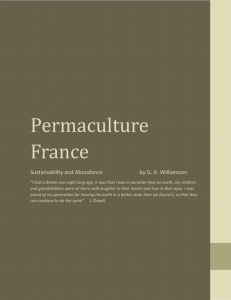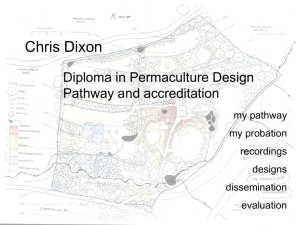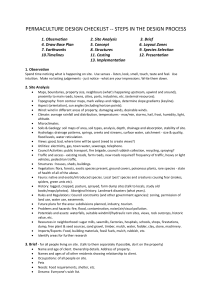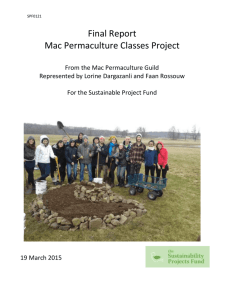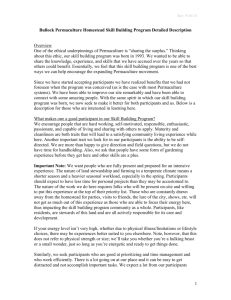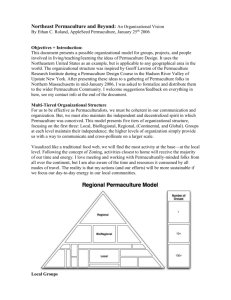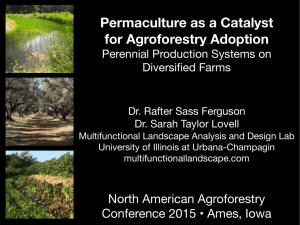21041 Demonstrate knowledge of permaculture and plan a
advertisement
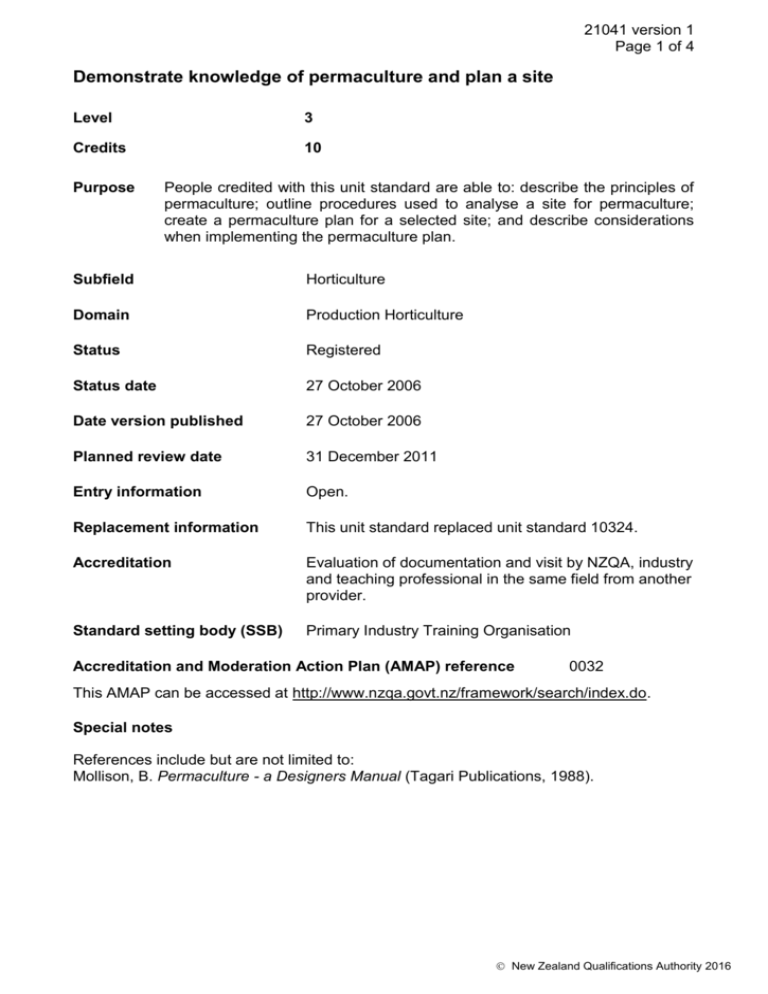
21041 version 1 Page 1 of 4 Demonstrate knowledge of permaculture and plan a site Level 3 Credits 10 Purpose People credited with this unit standard are able to: describe the principles of permaculture; outline procedures used to analyse a site for permaculture; create a permaculture plan for a selected site; and describe considerations when implementing the permaculture plan. Subfield Horticulture Domain Production Horticulture Status Registered Status date 27 October 2006 Date version published 27 October 2006 Planned review date 31 December 2011 Entry information Open. Replacement information This unit standard replaced unit standard 10324. Accreditation Evaluation of documentation and visit by NZQA, industry and teaching professional in the same field from another provider. Standard setting body (SSB) Primary Industry Training Organisation Accreditation and Moderation Action Plan (AMAP) reference 0032 This AMAP can be accessed at http://www.nzqa.govt.nz/framework/search/index.do. Special notes References include but are not limited to: Mollison, B. Permaculture - a Designers Manual (Tagari Publications, 1988). New Zealand Qualifications Authority 2016 21041 version 1 Page 2 of 4 Elements and performance criteria Element 1 Describe the principles of permaculture. Performance criteria 1.1 Philosophy and ethics behind permaculture are described. Range 1.2 General principles of permaculture design for horticultural operations are described. Range 1.3 caring for earth, caring for people, limiting consumption, cooperation compared to competition. relative locations, multiple functions, zoning, sectors, shapes and patterns, appropriate technology, observation, analysis, biological resources, diversity, planning, buildings, water, yield, conservation, shapes and patterns, climate, soil. General requirements for establishing permaculture principles in horticultural systems are described. Range ecology principles, stability, sustainable use of species and habitats. Element 2 Outline procedures used to analyse a site for permaculture. Performance criteria 2.1 The interaction of elements in the design of a total permaculture system is explained. Range 2.2 site, social, energy, abstract components. Factors to be evaluated in determining requirements for a specific site are identified. Range climate, physical resources, existing infrastructure, catastrophe defences. 2.3 Methods of gathering information for each factor are described. 2.4 Zones in permaculture are defined in terms of importance in planning, frequency of use, and service requirements. 2.5 Sectors in permaculture are defined and their importance in planning the use of a site is described. New Zealand Qualifications Authority 2016 21041 version 1 Page 3 of 4 2.6 Use of site analysis in the site planning is described. Range determining location and type of structures, selection of plant types and planting strategies, identifying use of energy and related resources, determination of environmental protection requirements and locations. Element 3 Create a permaculture plan for a selected site. Performance criteria 3.1 Site map for the original layout of the property is drawn with all key features. Range 3.2 Range of objectives intended for the site is defined with sufficient justification and are consistent with accepted principles of permaculture. Range 3.3 topography, climate and microclimates, soils, water sources and drainage, sites for infrastructure, catastrophe defences. site, social, energy, abstract components. Permaculture plan is drawn and each element of the design is explained in an accompanying document. Range site map, permaculture zones and sectors. Element 4 Describe considerations when implementing the permaculture plan. Performance criteria 4.1 Considerations during implementation of the permaculture plan are described. Range 4.2 passive energy systems, climate control on site, low maintenance structures and grounds, site self sufficiency, minimising external energy needs, safe on site waste disposal, water supply provision and conservation. Considerations to be monitored when evaluating the success of a permaculture development are described. Range energy use and savings; impact of external events on the system; effectiveness of plantings, earthworks, and facilities in the landscape; efficiency of resource use. New Zealand Qualifications Authority 2016 21041 version 1 Page 4 of 4 Please note Providers must be accredited by the Qualifications Authority, or an inter-institutional body with delegated authority for quality assurance, before they can report credits from assessment against unit standards or deliver courses of study leading to that assessment. Industry Training Organisations must be accredited by the Qualifications Authority before they can register credits from assessment against unit standards. Accredited providers and Industry Training Organisations assessing against unit standards must engage with the moderation system that applies to those standards. Accreditation requirements and an outline of the moderation system that applies to this standard are outlined in the Accreditation and Moderation Action Plan (AMAP). The AMAP also includes useful information about special requirements for organisations wishing to develop education and training programmes, such as minimum qualifications for tutors and assessors, and special resource requirements. Comments on this unit standard Please contact the Primary Industry Training Organisation www.primaryito.ac.nz if you wish to suggest changes to the content of this unit standard. New Zealand Qualifications Authority 2016
